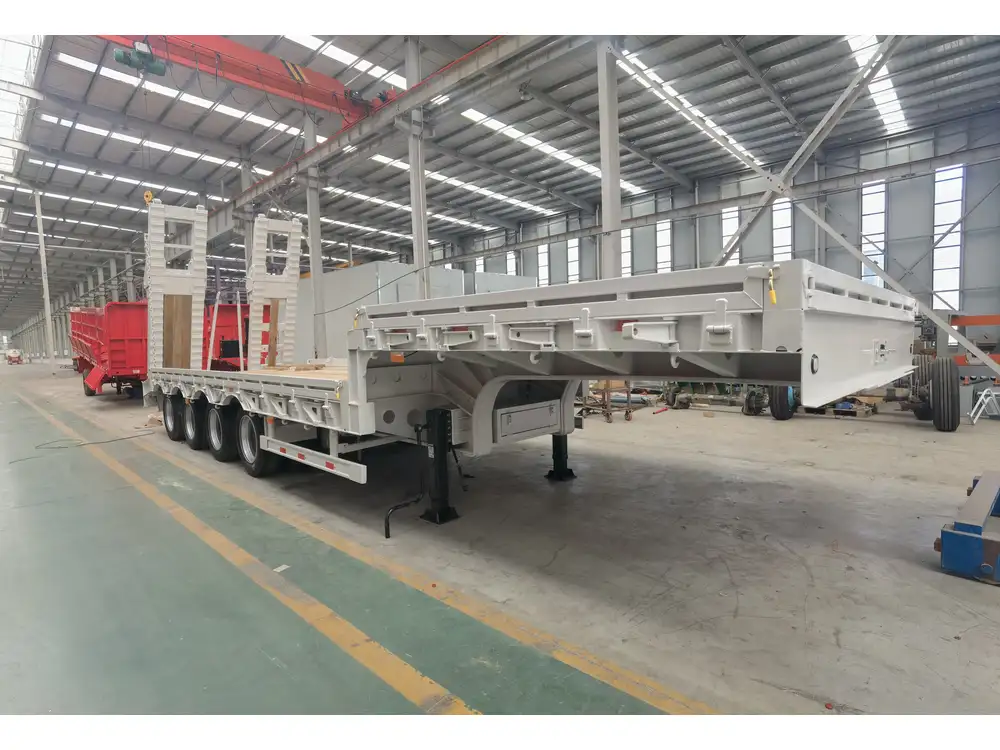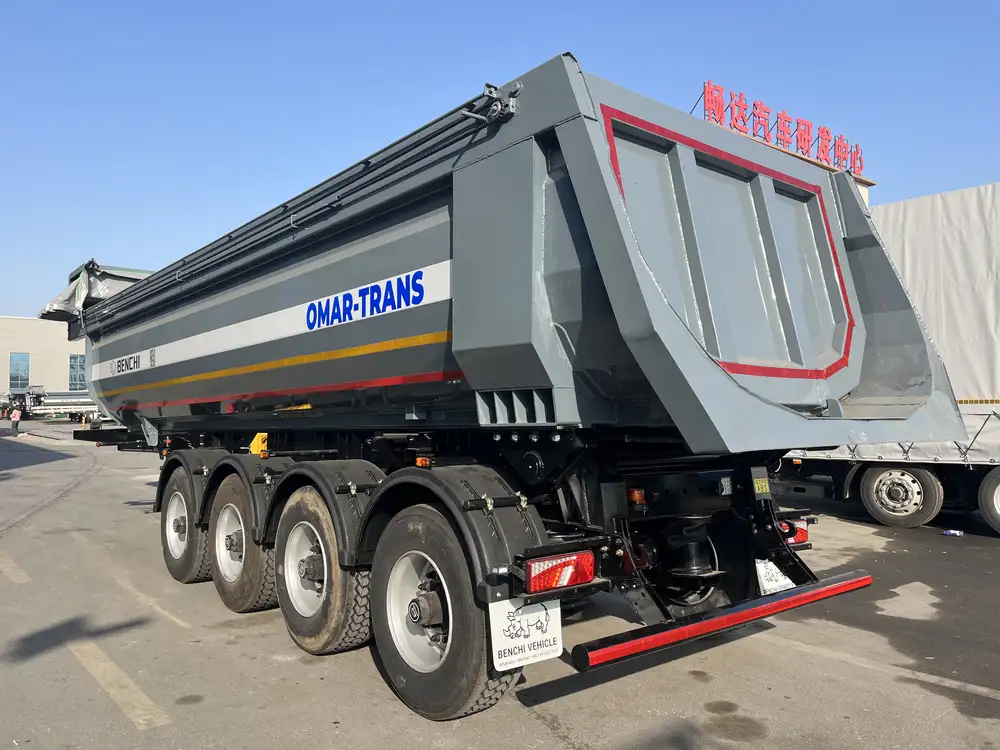When it comes to transporting goods efficiently, selecting the right trailer is crucial. One of the key specifications that play a significant role in choosing a flatbed trailer is its deck height. In this article, we delve deeply into the essence of deck height, exploring its implications, variations, standards, and how it impacts the overall transportation process.
What is Deck Height?
Deck height refers to the distance from the ground to the top of the trailer bed. This measurement is pivotal for compatibility with loading equipment and understanding the loading and unloading process. Deck height can fluctuate based on the type of trailer, its intended use, and the combination of truck and trailer used. Knowing the deck height can help determine how easily loads of various heights can be maneuvered onto the trailer.
Importance of Deck Height
Loading Efficiency: A correctly sized deck height allows for seamless loading and unloading of cargo. If the deck height is too high, it may require specialized equipment to lift goods onto the trailer, leading to increased costs and time. Conversely, a height too low might risk obstructions on the road.
Stability and Safety: Deck height contributes significantly to the stability of the trailer when loaded. Ensuring that the center of gravity remains low is key to maintaining balance during transport, especially on uneven terrains.
Regulatory Compliance: Transporting oversized loads often requires adherence to height regulations imposed by local, state, or federal authorities. Knowing your trailer’s deck height helps avoid potential legal issues regarding transport restrictions.

Standard Deck Heights of Flatbed Trailers
Flatbed trailers come in various configurations and sizes, each with a distinct deck height. Here’s a comparative look at common flatbed trailer types and their typical deck heights:
| Trailer Type | Typical Deck Height (inches) | Usage |
|---|---|---|
| Standard Flatbed | 48 – 54 | General freight transport |
| Lowboy Trailer | 18 – 24 | Hauling heavy equipment |
| Step Deck Trailer | 32 – 38 | Oversized loads |
| Highboy Trailer | 54 – 60 | Specialty cargo transportation |
| Utility Flatbed | 34 – 42 | Light or small loads |
Variations Based on Manufacturer and Model
Different manufacturers may produce trailers with varied specifications, even for similar types. It’s vital to consult specific model details when considering the deck height of a flatbed trailer. Often, manufacturers will provide extensive customization options, which could include adjustments in deck height according to client requirements.
Factors Influencing Deck Height Decisions
When selecting a flatbed trailer, several factors influence the choice of deck height:
Cargo Type and Dimensions: The nature of the goods that will be transported influences the necessary deck height. For example, if you are regularly transporting large machinery, a lower deck height can facilitate easier loading.
Transport Regulations: Considering which jurisdictions the trailer will operate in is essential. Different regions may have varying maximum height restrictions affecting the allowable deck height.
Trailer Configuration: Variants like extendables or multi-axle setups might offer different heights for specific cargo conditions.
Loading Equipment Used: The type of loading equipment (like forklifts or cranes) that will be used can dictate the appropriate deck height to ensure a seamless loading process.

Common Deck Height Misconceptions
It’s easy to fall prey to misconceptions surrounding trailer deck height. Here are a few to consider:
All Flatbeds Have a Standard Height: While there are common height ranges, the specific application needs often dictate custom specifications.
Higher is Always Better: A higher deck does not always equate to better cargo management. Stability can be compromised, and loading can become cumbersome if the height is not tailored to your freight.
Deck Height Does Not Matter for Safe Transport: The height impacts not just loading efficiency but also safety during transport. An unbalanced load can lead to accidents, making the right deck height indispensable.
How Deck Height Impacts Loading Procedures
Understanding how deck height affects loading operations can help streamline logistics processes. Here, we break down various loading procedures based on differing deck heights.
Low-Profile Loading
For trailers with lower deck heights (such as lowboy trailers), the loading process becomes easier, particularly for heavy equipment. Here’s how it plays out:
- Forklift Usage: Forklifts can efficiently load items without extensive ramp setups.
- Reduced Delivery Times: Lower heights facilitate faster loading/unloading times, enabling companies to adhere to tight schedules.
- Safety: Lower heights reduce the risks associated with high loading angles, minimizing the chance of accidents.

Standard Loading Heights
Standard flatbed trailers offer flexibility but require strategic planning:
- Loading Ramps: Longer ramps may be necessary for items with significant heights, which can increase loading times and require extra handling equipment.
- Stability Issues: Cargo must be secured properly to avoid shifting, particularly at varied heights.
Specialized Loading
Customized deck heights play a crucial role in specialty transports:
- Oversized Loads: Step deck trailers allow oversized loads to stay below bridge height restrictions while providing a stable platform for transport.
- Multi-Level Cargo: For complex loads that require multi-level stacking, knowing the precise height allows for better space management and stability during transit.
Practical Considerations for Buyers

Evaluating Your Needs
Here’s a structured checklist to help buyers assess their requirements when considering deck height:
- Nature of Goods: Understand the size, weight, and type of cargo needing transport.
- Legal Requirements: Familiarize yourself with height regulations in operational regions.
- Future Needs: Consider whether growth or expansion is likely, which could necessitate a different deck height in the future.
- Customization Options: Evaluate manufacturers that offer bespoke solutions tailored to specific business needs.
Performing a Comparison
When renting or purchasing a flatbed trailer, consider creating a comparison table to evaluate the offerings available:
| Feature | Trailer A | Trailer B | Trailer C |
|---|---|---|---|
| Deck Height (inches) | 48 | 54 | 34 |
| Weight Capacity (lbs) | 48,000 | 50,000 | 42,000 |
| Price | $30,000 | $32,500 | $28,000 |
| Warranty | 2 years | 3 years | 1 year |
| Customization Options | Yes | No | Yes |
Consulting with Experts
Before making a purchase, consulting with industry experts, or contacting manufacturers directly can provide insights into the viability of your choices. Their expertise can illuminate the nuances of deck height influencing operational efficiencies.

Conclusion
Deck height is a pivotal consideration for anyone involved in the transportation of goods via flatbed trailers. Its implications touch upon safety, efficiency, and compliance, affecting the overall cost and complexity of shipping processes. Careful consideration, informed decision-making, and an understanding of the intricacies surrounding deck height can elevate your transport operations significantly.
With informed choices and tailored specifications, businesses can enhance logistics performance, ensuring seamless, safe, and efficient freight transport. As the industry evolves, staying abreast of these specifications becomes paramount, enabling companies to adapt and prosper in a competitive market.



